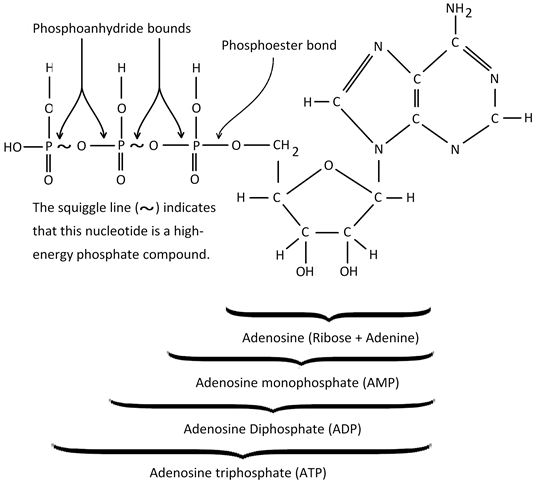

In S49 T-cell lymphoma cells, apoptosis can be induced through a cAMP/PKA-dependent pathway. Patulin-induced apoptosis in human leukemia cells is mediated through the mitochondrial pathway ĪML (IPC-81) and multiple myeloma cells undergo rapid apoptosis after cAMP elevation. An orally bioavailable parthenolide analog selectively eradicates acute myelogenous leukemia stem and progenitor cells Ī mycotoxin produced from Penicillium and Aspergillus. It was shown to inhibit cancer cell proliferation Ī sesquiterpene lactone from Tanacetum parthenium.
#Non cyclic amp molecule after dissolved in water trial#
A phase I trial for clioquinol in patients with hematologic malignancies has been reported Ī major tanshinone isolated from Salvia miltiorrhiza. Along with artemisinin currently used as antimalarial drugs in Asia.Ĭlioquinol (Iodochlorhydroxyquin) is the FDA approved antifungal and antiprotozoal drug. In 2007, FDA approved investigational new drug protocol #76,725 entitled “Intravenous Artesunate for Treatment of Severe Malaria in the United States”Īrtesunate is hydrolysed to its active metabolite dihydroartemisinin. Table 1: Hit compounds identified in the screen for inhibition of cAMP efflux Nonetheless, a significant body of literature suggests that modulating the cAMP pathway provides a number of promising targets for treating leukemia. icAMP compartmentalization may also contribute to the complexity of signaling. Additionally, cAMP can have both pro- and anti-apoptotic activity within the same cell depending upon experimental conditions. In leukemias/lymphomas, cAMP elevation can be pro-apoptotic, whereas in leukocytes/macrophages it is reported to be anti-apoptotic (see Tables 1 and 2 in ref.

In certain tumors, including pituitary, adrenocortical and thyroid adenomas and carcinomas, the cAMP/ protein kinase A (PKA) pathway provides signals required for tumor development and/or cell survival. The effect of intracellular cAMP (icAMP) elevation is tissue/cell specific. This creates a unique situation, where an additional targetable pathway, previously unexploited by traditional chemotherapeutics, may exist in AML cells. Apoptosis can be induced via two major pathways, extrinsic and intrinsic, and in acute myelogenic leukemia (AML) the latter can be directly triggered by elevation of cAMP, which acts synergistically with first-line antileukemic agents. Furthermore, because some of the identified drugs are currently used for treating other illnesses, this work creates an opportunity for repurposing.Īpoptosis serves as a natural barrier to cancer development, and targeting this cancer hallmark represents an indispensable therapeutic strategy. Our data suggest that cAMP efflux is a functional feature that could be therapeutically targeted in leukemia. These compounds also decreased cAMP efflux and viability of B-lineage acute lymphoblastic leukemia (B-ALL) cell lines and primary patient samples, but not of normal primary peripheral blood mononuclear cells. Blocking adenylyl cyclase activity was sufficient to reduce effects of the most potent compounds. In an acute myeloid leukemia (AML) model, several identified compounds reduced cAMP efflux, appropriately modulated pathways that are responsive to cAMP elevation (cAMP-responsive element-binding protein phosphorylation, and deactivation of Very Late Antigen-4 integrin), and induced mitochondrial depolarization and caspase activation. We developed a novel assay to assess cAMP efflux and performed screens to identify inhibitors. Accordingly, cAMP efflux inhibition should result in: cAMP accumulation, activation of cAMP-dependent downstream signaling, viability loss, and apoptosis. We hypothesize that leukemic cells possess mechanisms that efflux cAMP from the cytoplasm, thus protecting them from apoptosis.

We propose that some cancers may evade cell death by regulating 3’-5’-cyclic adenosine monophosphate (cAMP), which is associated with pro-apoptotic signaling. Received: ApAccepted: ApPublished: ApAbstractĪpoptotic evasion is a hallmark of cancer. Keywords: cyclic AMP, drug repurposing, efflux, evasion of apoptosis, leukemia Sklar 1,2,3 and Alexandre Chigaev 1,2,3ġ University of New Mexico Comprehensive Cancer Center, Albuquerque, NM, USAĢ University of New Mexico Center for Molecular Discovery, Albuquerque, NM, USAģ Department of Pathology, University of New Mexico Health Sciences Center, Albuquerque, NM, USAĤ Department of Pediatrics, University of New Mexico Health Sciences Center, Albuquerque, NM, USA Carter 1,2, Annette Evangelisti 1,2,3, Ksenia Matlawska-Wasowska 1,4, Stuart S. Perez 1,2,3, Yelena Smagley 1,2, Matthew Garcia 1,2, Mark B.


 0 kommentar(er)
0 kommentar(er)
